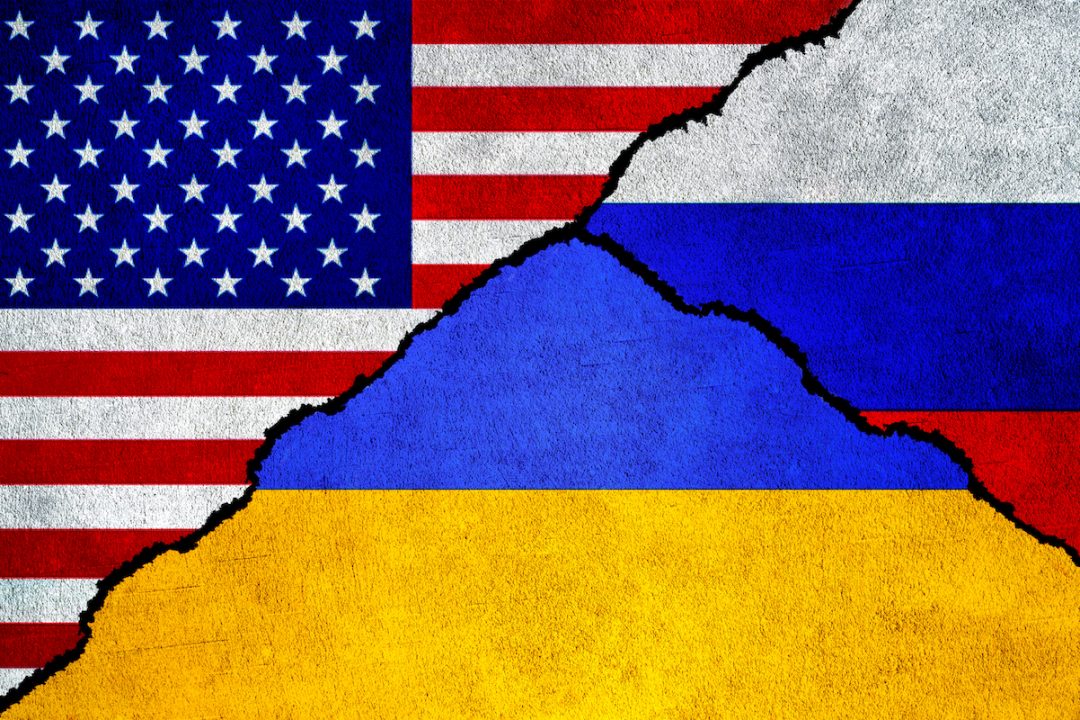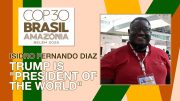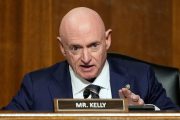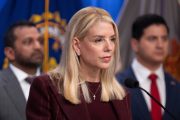
Although he campaigned vigorously on a pro-peace platform and pledged to end the war in Ukraine “within 24 hours” — or even “before taking office” — President Donald Trump offered scant specifics, hinting instead on the allure of his personal negotiating prowess. On Wednesday, the suspense lifted as Trump revealed his strategy: a threat of expanded sanctions against Russia should the conflict persist.
The president took to Truth Social to address the ongoing war in Ukraine, revealing his plan to leverage economic sanctions against Russia to force an end to the conflict. In the post, Trump struck a characteristic tone, alternating between praise for Russia and a stern warning. He wrote,
If we don’t make a “deal,” and soon, I have no other choice but to put high levels of Taxes, Tariffs, and Sanctions on anything being sold by Russia to the United States, and various other participating countries.
The president added that he’s doing Russia, “whose economy is failing,” and President Vladimir Putin a “very big FAVOR” by strong-arming him into peace. The post reads, in part,
Settle now, and STOP this ridiculous War! IT’S ONLY GOING TO GET WORSE… We can do it the easy way, or the hard way – and the easy way is always better. It’s time to “MAKE A DEAL.” NO MORE LIVES SHOULD BE LOST!!!
The proposal, which echoes measures already implemented under Joe Biden’s administration, reflects a shift from Trump’s previous criticism of sanctions on Russia as ineffective. While he maintained that the war “never would have started” if he had been president, his approach now suggests that resolving the conflict may require more than campaign slogans.
Shifting Deadlines
As part of his broader strategy, Trump appointed retired Lieutenant General Keith Kellogg as special envoy to Ukraine. The president tasked him with ending the war within 100 days, according to The Wall Street Journal.
Kellogg, a retired Army officer with a notable military career but limited diplomatic experience, was reportedly selected for the role in part due to his long-standing alignment with Trump’s vision. At the same time, he was involved in drafting a peace plan between the two countries for the America First Policy Institute (AFPI). The plan advocates a “carrot-and-stick” approach to bringing Russia and Ukraine to the negotiating table.
Key elements of that plan include:
- Freezing the front line at its current position to encourage talks without immediate territorial concessions.
- Conditioning U.S. military aid to Ukraine on its willingness to participate in negotiations.
- Offering partial sanctions relief to Russia as an incentive to engage in peace talks.
- Proposing a delay in Ukraine’s NATO membership in exchange for U.S.-backed security guarantees.
According to the WSJ report, Russia has already dismissed Kellogg’s plan as a “non-starter,” citing its refusal to negotiate over annexed Ukrainian territories and its insistence on the removal of all sanctions.
Russian Response: What’s New?
Russia has reacted cautiously but critically to President Trump’s threat of new sanctions and tariffs aimed at pressuring Moscow to end the war in Ukraine. According to Newsweek, Kremlin spokesman Dmitry Peskov dismissed the threats as lacking novelty, remarking,
We do not see any particularly new elements here. He likes these methods, at least he liked them during his first presidency.
Peskov emphasized that Russia remains open to dialogue, but only under conditions of equality and mutual respect. He reiterated Putin’s stance that meaningful negotiations must address the “root causes” of the conflict. Those include first and foremost NATO’s enlargement, which Moscow views as a key security concern.
Dmitry Polyanskiy, Russia’s Deputy UN Representative, also said resolving the crisis requires addressing the root causes, and doubted that Trump’s economic pressure alone would bring resolution.
NATO’s “Very Happy” With the Plan
NATO Secretary-General Mark Rutte endorsed Trump’s proposed sanctions against Russia. He described them as a necessary measure to pressure Moscow into ending the war in Ukraine. According to an NBC report, Rutte, speaking at the World Economic Forum in Davos, remarked:
I was very, very happy with the position of Trump to put more sanctions on Russia. We know that the Russian economy is doing terribly bad[ly], and the sanctions will help.
He urged European countries to “step up” with additional measures to pressure Moscow, stressing the need to cut off Russian funding for the war.
Rutte highlighted the importance of a “sustainable” peace deal that, in his view, would prevent Russia from pursuing future aggression, stating:
We have to get to a position where Russia will never, ever, ever again try to catch one square kilometer of Ukraine, so it has to be a strong deal.
He warned against territorial concessions that could undermine Ukraine’s long-term security.
Although some allies show signs of fatigue after nearly three years of conflict, the NATO chief expressed confidence that the alliance could help shift the war’s course. He also supported Trump’s call for increased defense spending, urging all NATO members to meet or exceed the two-percent GDP target.
Existing Sanctions
Sanctions have been central to the U.S. response to Russia’s invasion of Ukraine, with the Biden administration imposing extensive measures in coordination with allies. These include freezing Russian Central Bank assets, blocking some banks from global banking network SWIFT, banning Russian energy imports, and targeting Kremlin-linked entities. While these sanctions have strained Russia’s economy, they have not ended the conflict. Instead, Russia has deepened economic ties with countries like China and India, partly offsetting the impact. Trump’s proposed sanctions largely mirror these efforts, prompting questions about how his approach differs from existing policies.
Tariffs
As for the tariff part, the U.S. has already imposed significant trade restrictions on Russia. In April 2022, Russia’s “most favored nation” trade status was revoked, subjecting its imports to higher tariff rates. Further measures in 2023 increased tariffs on specific goods, such as a 200-percent duty on aluminum and higher rates on metals. These actions have sharply reduced trade between the two countries, with U.S. imports from Russia totaling just $4.9 billion in 2023. Given the already minimal trade, additional tariffs are unlikely to exert significant economic pressure on Moscow.
U.S. Aid to Ukraine
Since the beginning of the war in February 2022, the United States has provided over $175 billion in aid to Ukraine. This figure, detailed in a May 2024 Congressional Budget Office (CBO) report, underscores the massive scale of U.S. involvement in the conflict.
This assistance has included substantial military support, with billions allocated for advanced weapons systems such as HIMARS, Patriot missiles, and drones, which have been critical in Ukraine’s efforts to resist Russian advances. Beyond military aid, the U.S. has directed significant economic assistance to stabilize Ukraine’s government and keep its economy afloat amid the ongoing conflict. Additionally, billions have been spent to strengthen NATO’s eastern flank, bolstering the defenses of allied nations near Russia.
This unprecedented level of support has undoubtedly strengthened Ukraine’s defense. However, the focus on military aid over negotiations has undeniably drawn out the conflict. The proposal to tie future aid to Ukraine’s participation in peace talks not only underscores the United States’ role in shaping the course of the war, but prolongs its unconstitutional interference in the affairs of the two countries.





